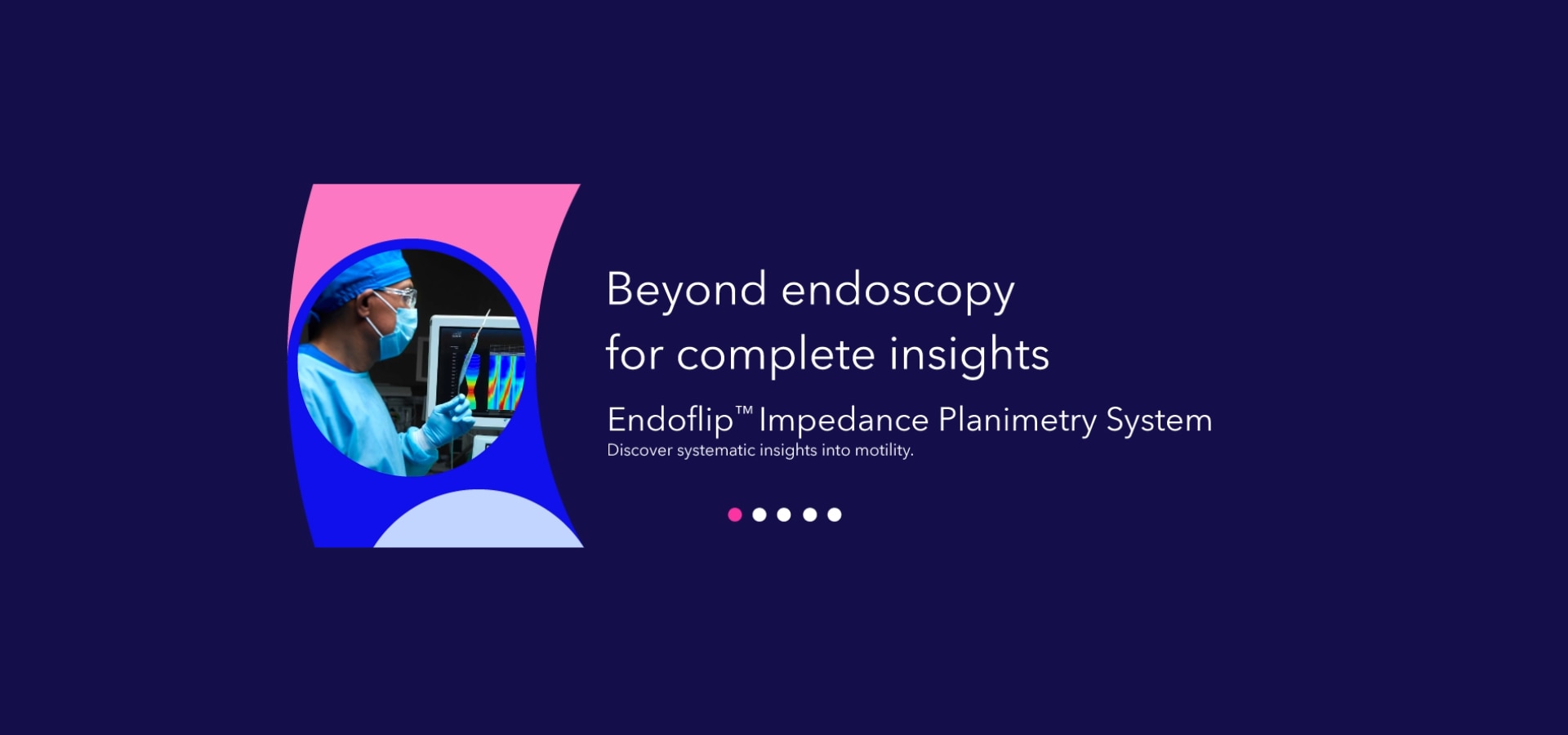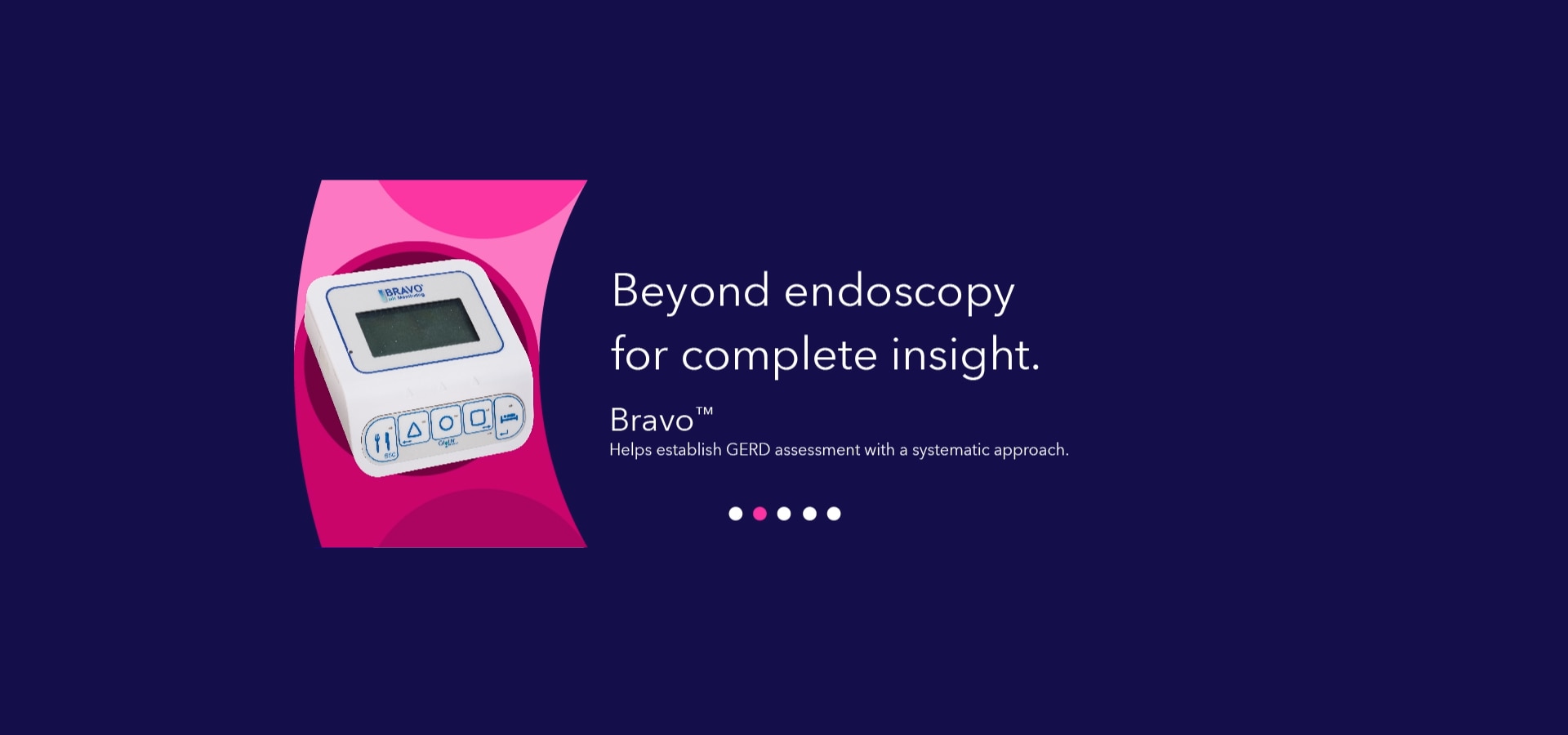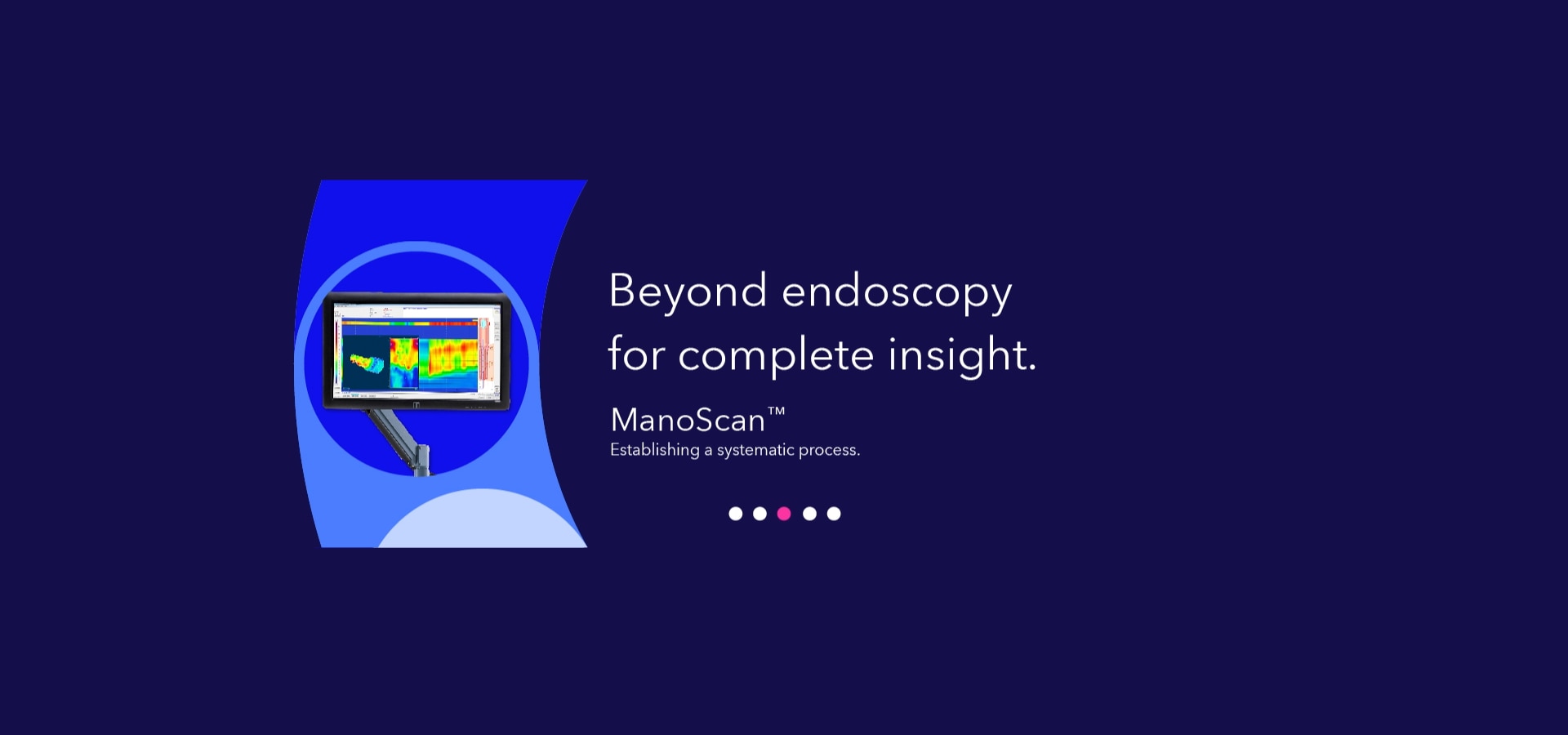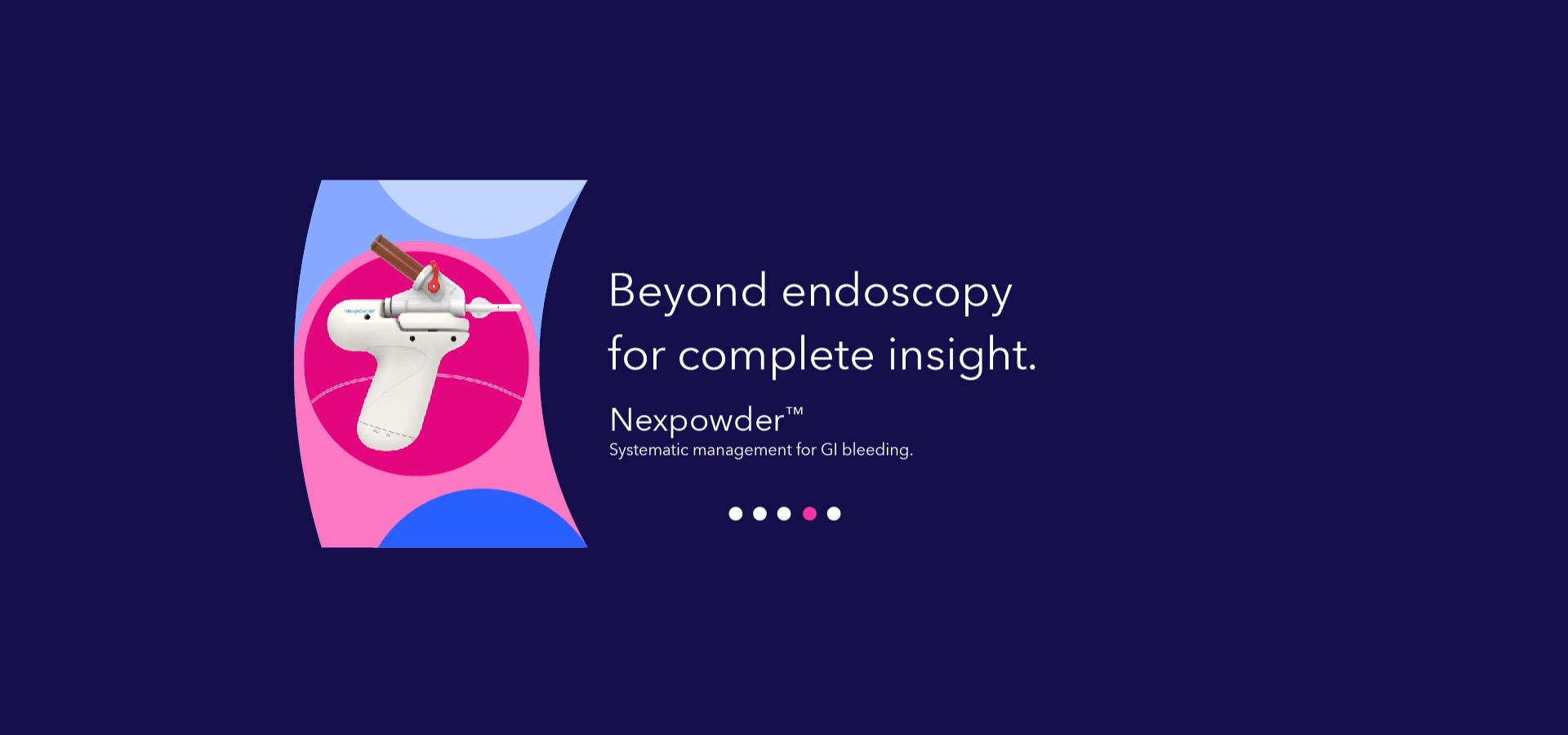Risk information
Please refer to product user manual or medtronic.com/covidien/uk for detailed information.
Barrx™ radiofrequency ablation system
Indications: The Barrx™ 360 Express RFA Balloon Catheter is indicated for use in the coagulation of bleeding and non-bleeding sites in the gastrointestinal tract, including but not limited to, Barrett’s esophagus and esophageal squamous cell neoplasia, defined as moderate grade intraepithelial neoplasia (MGIN), high grade intra-epithelial neoplasia (HGIN), and/or early squamous cell carcinoma (SCC) of the esophagus limited to the lamina propria (i.e., T1m2). The Barrx™ 90, Barrx™ Ultra Long and Barrx™ 60 RFA Focal Catheters are indicated for use in the coagulation of bleeding and non-bleeding sites in the gastrointestinal tract including but not limited to, Barrett’s esophagus and esophageal squamous cell neoplasia, defined as moderate grade intraepithelial neoplasia (MGIN), high grade intra-epithelial neoplasia (HGIN), and/or early squamous cell carcinoma (SCC) of the esophagus limited to the lamina propria (i.e., T1m2).
Contraindications: Contraindications include pregnancy, prior radiation therapy to the esophagus, esophageal varices at risk of bleeding, prior Heller myotomy and cosinophilic esophagitis.
Risks: The following are transient side effects that may be expected after treatment: chest pain, difficulty swallowing, painful swallowing, throat pain and/or fever.
Potential complications include mucosal laceration, minor or major bleeding, endoscopic clipping to manage mucosal laceration or bleeding, perforation of the stomach, esophagus or pharynx, surgery to manage perforation, esophageal stricture, endoscopic dilation to manage stricture, pleural effusion, transfusion secondary to major bleeding, cardiac arrhythmia, aspiration, infection, death.
Bravo™ Reflux Testing System
Indications: The Bravo™ monitoring system is intended to be used for gastroesophageal pH measurement and monitoring of gastric reflux in adults and children from 4 years of age. The Bravo™ capsule can be attached following either endoscopy or manometry. The Reflux/Accuview™ software application is intended to record, store, view and analyze gastroesophageal pH data.
Contraindications: Patients with bleeding diathesis, strictures, severe esophagitis, varices or obstructions. Patients with pacemakers or implantable cardiac defibrillators.
Risk: Aspiration, tears or perforations in the mucosa, discomfort associated with the capsule, premature detachment or failure to detach, which may necessitate endoscopic removal. The safety and efficacy has not been established for pediatric use on patients below the age of 4. Patients are restricted from undergoing an MRI study within 30 days of the start of a reflux study. Use of the Bravo™ reflux testing system in an MRI magnetic field will result in damage to the system and possible patient injury. Undergoing an MRI while the Bravo™ reflux capsule is inside the patient’s body may result in serious damage to the patient’s intestinal tract or abdominal cavity. If the patient did not positively verify the excretion of any Bravo™ reflux capsule, the patient should contact the physician for evaluation and possible abdominal x-ray before undergoing an MRI examination. The Bravo™ reflux capsule contains a trocar needle that is made of stainless steel. Use caution in patients with known sensitivities to the metals that are contained including chromium, nickel, copper, cobalt and iron. Tests last from 48 to 96 hours.
Gastrointestinal endoscopy: Potential complications include, but are not limited to: perforation, hemorrhage, aspiration, fever or infection, hypertension, respiratory arrest and cardiac arrhythmia or arrest.
Nasal intubation: Potential complications include, but are not limited to: Sore throat, discomfort and nasopharyngeal damage resulting in bleeding and soft tissue damage.
Endoflip™ impedance planimetry system
Indications: The Endoflip™ System is used in a clinical setting to obtain an estimation of the dimensions and balloon pressure within the alimentary canal. The FLIP™ Topography System is an accessory to the Endoflip™ System. The FLIP™ Topography System is indicated for use with an Endoflip™ System in a clinical setting to measure pressure and dimensions in the esophagus, pylorus and anal sphincters. It is intended to be used as an adjunct to other diagnostic methods as part of a comprehensive evaluation of patients with symptoms consistent with gastrointestinal motility disorders.
Contraindications: Where endoscopy is contraindicated In patients with actively bleeding varices in the esophagus
Potential complication include: Allergic reaction Anaphylaxis Bleeding Cardio-respiratory complications, Dental trauma, Infection, Pain, Perforation, Pulmonary aspiration, Vasovagal response.
Precautions: Do not reuse, reprocess or sterilize the catheters. Reuse, reprocessing or sterilization can compromise the structural integrity of the device, impair performance accuracy due to residual fluid in the balloon and degrade the catheter markings. All catheter components are intended for single patient use only. Do not attempt to reuse. Follow all applicable Federal and local regulations for disposal or recycling. To ensure proper operation and to minimize the risk of patient injury, do not attempt to add or remove fluid from the supplied pre-filled syringes. Only use the pre-filled syringe supplied with the catheter. Do not use this device for any purpose other than the indicated use. Inspect the device packaging before use and do not use the device if any damage to inner pouch or device is observed. Do not use the catheter if excessive resistance is met during insertion or removal. Prior to repositioning or removal, ensure complete deflation of the balloon.
Nexpowder™* endoscopic hemostatic system
Indications: Nexpowder™* is used for most GI bleeding. The device is applied during an endoscopic procedure and can cover ulcer or bleeding sites. The device is not intended for use in patients with variceal bleeding. Note: Do not use this device for any purpose other than stated intended use.
Contraindications: Because the Nexpowder™* system includes lactose, it is contraindicated in patients who have galactose intolerance, lapp lactase deficiency or glucose-galactose malabsorption and they would be at risk of having nausea, bloating and diarrhea. Because the Nexpowder™* system includes Brilliant Blue FCF, it must not be used in patients with known hypersensitivity to brilliant blue FCF.
Warning: Nexpowder™ has not been approved for use in pregnant women, nursing mothers and pediatric population and there is no safety or efficacy data in these groups. Patients that are on antithrombotic medication may be at an increased risk of re-bleeding. Take individual patient needs and relevant clinical guidelines into account when managing antithrombotic agents for endoscopic procedures. Consider consulting the physician responsible for the antithrombotic if needed. This medical device is designed for single use only. Attempts to resterilize and/or reuse may lead to device failure and/or transmission of disease.
Precautions: This medical device must be delivered under a physician’s direction. Nexpowder™ is a sterilized medical device and should not be re sterilized and reused. If the package is damaged or opened, or if device is damaged, do not use. If an abnormality is detected that would prohibit proper working conditions, do not use. Please notify a NEXTBIOMEDICAL CO., LTD. representative. If Nexpowder™ is exposed to skin and eyes, refer to the following First aid measure: Skin: Wash with soap and water until clean. Eyes: Flush with water until irritation ceases.
Potential complications: Those associated with gastrointestinal endoscopy include, but are not limited to: hemorrhage, perforation, aspiration, fever, infection, allergic reaction, and foreign body sensation in the digestive tract.









